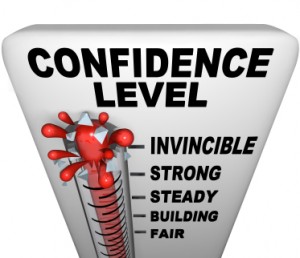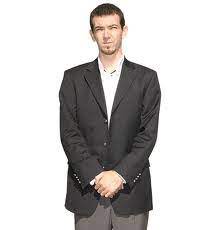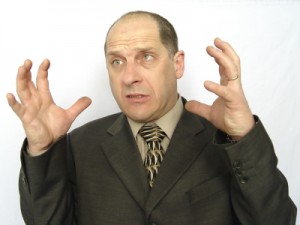
by Guila Muir
info@guilamuir.com
I stood over the two participants, saying loudly, “No! No! No!” At first, they were so immersed in their screens that they didn’t even know I was there. As they returned to the present world, their faces changed from screen-fascination to shock. What was I doing, looming above them, looking so stern? They hadn’t heard a thing since they’d pulled out their devices.
I wondered the same thing. What was I doing there? Why was I so irritated? As a trainer, had I lost emotional composure (a major element of credibility, according to McCroskey, Holdrige & Toomb’s 1999 research)? Had I blown it completely as a trainer?
The class had just returned from a break, which I’d prefaced with “The break would be a great time to use your electronic devices.” That statement has been successful with dozens of groups. During breaks, participants check messages, and then totally participate during class. I made a decision some time ago that I wouldn’t state overt behavioral guidelines in my training sessions. Now I was beginning to think my subtlety had been a big mistake.
What’s the Big Deal?
I don’t take much personally after twenty-five years as a professional trainer, but lack of participation in a highly interactive session is the one thing that “gets my goat.” When a student uses his electronic device during class, I don’t understand why he is taking up space in the room. Recent research also shows that student performance goes down when cell phone use is allowed during training, (Duncan, Hoekstra, and Wilcox, 2012). When students text in class, other students are distracted as well (Tindell and Bohlander, 2012).
“It’s Just the Way It Is”
Most universities have created behavioral guidelines addressing electronic devices, with consequences attached:
“A student may not use an electronic device during class time without the express permission of the instructor. Use of cell/smartphones during class time is always prohibited, as is leaving the room to answer or make a call.” (Texas State University).
“Using electronic or wireless devices in the classroom is a privilege, not a right. Instructors may reduce points awarded for participation in class or other graded activities for the inappropriate use of electronic or wireless devices.” (University of Wisconsin).
Most trainers in business situations make a verbal statement about this issue as well. My not stating aloud my clear expectations in this instance was, well, my bad.
Strategies to Govern Use of Electronic Devices in the Classroom
Trainers, this classroom management issue falls squarely in your lap. Your participants may be modeling behavior that supervisors demonstrate or tacitly condone. In fact, it may well be an organizational norm. I have noted the lack of personal presence due to screen addiction in almost all the organizations I have worked with over the last five years.
So it’s up to you, and me, to challenge this in our classrooms.
Your statement about the accepted use of electronic devices needs to come before you get into any content—right up front, after describing what your participants will be able to do as a result of the class. You can state your specific expectations aloud as well as provide them in written form. These might sound like:
“Please use your electronic devices during the break. Turn them totally off,” (my preference), “or put them in vibrate mode during class.”
“You may use your electronic devices to research specific points during our training. I will tell you when these opportunities occur.”
You must provide frequent breaks anyway—not so much to allow participants to check their devices, but to ensure physical movement and an opportunity for students to relax and reflect. I like to give breaks every 60 to 75 minutes.
Moral of the Story
Although electronic devices are endemic in society, they should only play small and highly specific roles in the classroom. So, trainers, it’s up to us to ensure that behavioral expectations are crystal-clear. As I learned, subtlety around this issue doesn’t go very far in this screen-world we live in today.
Let me know your experiences with this topic!
Research cited: Duncan, D., Hoekstra, A., & Wilcox, B. (2012). Digital devices, distraction, and student Performance: does in-class cell phone use reduce learning? Astronomy Education Review, 11, 010108-1, 10.3847/AER2012011.
Tindell, D. & Bohlander, R. (2011). The use and abuse of cell phones and text messaging in the classroom: A survey of college students. College Teaching. 60. Pgs. 1-9.
Want more tips to improve your speaking self? Learn about Guila Muir’s Presentation Skills Workshop.
Guila Muir is a premiere trainer of trainers, facilitators, and presenters. Since 1994, she has helped thousands of professionals improve their training, facilitation, and presentation skills. Find out how she can help transform you from a boring expert to a great presenter: www.guilamuir.com




 Recently, I had the honor to be an audience member instead of a presenter. By watching instead of doing, I got the opportunity to re-assess my beliefs about what makes speakers effective. Here’s what I noticed:
Recently, I had the honor to be an audience member instead of a presenter. By watching instead of doing, I got the opportunity to re-assess my beliefs about what makes speakers effective. Here’s what I noticed:

 Oh, if only I could advocate Figleaf, since it’s the go-to position of many presenters. After giving Figleaf a thumbs-up in this fantasy scenario, I could also wholeheartedly endorse the following, both online and IRL:
Oh, if only I could advocate Figleaf, since it’s the go-to position of many presenters. After giving Figleaf a thumbs-up in this fantasy scenario, I could also wholeheartedly endorse the following, both online and IRL: Figleaf occurs when you place one or more hands in front of your midsection or abdomen. Using “Figleaf”, even while sitting, closes you in and hunches you inward. It can lower others’ perception of your credibility.
Figleaf occurs when you place one or more hands in front of your midsection or abdomen. Using “Figleaf”, even while sitting, closes you in and hunches you inward. It can lower others’ perception of your credibility.

